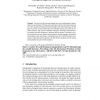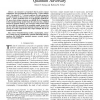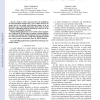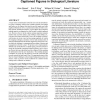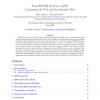763 search results - page 99 / 153 » Using multiple ontologies in information extraction |
140
click to vote
DILS
2009
Springer
14 years 9 months ago
2009
Springer
Abstract. Success in the life sciences depends on access to information in knowledge bases and literature. Finding and extracting the relevant information depends on a user's ...
TIT
2008
14 years 11 months ago
2008
An extractor is a function that is used to extract randomness. Given an imperfect random source X and a uniform seed Y , the output (X; Y ) is close to uniform. We study properties...
106
click to vote
WEBI
2010
Springer
14 years 9 months ago
2010
Springer
Today's world is characterized by the multiplicity of interconnections through many types of links between the people, that is why mining social networks appears to be an impo...
111
click to vote
KDD
2009
ACM
16 years 12 days ago
2009
ACM
A major source of information (often the most crucial and informative part) in scholarly articles from scientific journals, proceedings and books are the figures that directly pro...
100
click to vote
CORR
2010
Springer
14 years 12 months ago
2010
Springer
RESTful services on the Web expose information through retrievable resource representations that represent self-describing descriptions of resources, and through the way how these...
